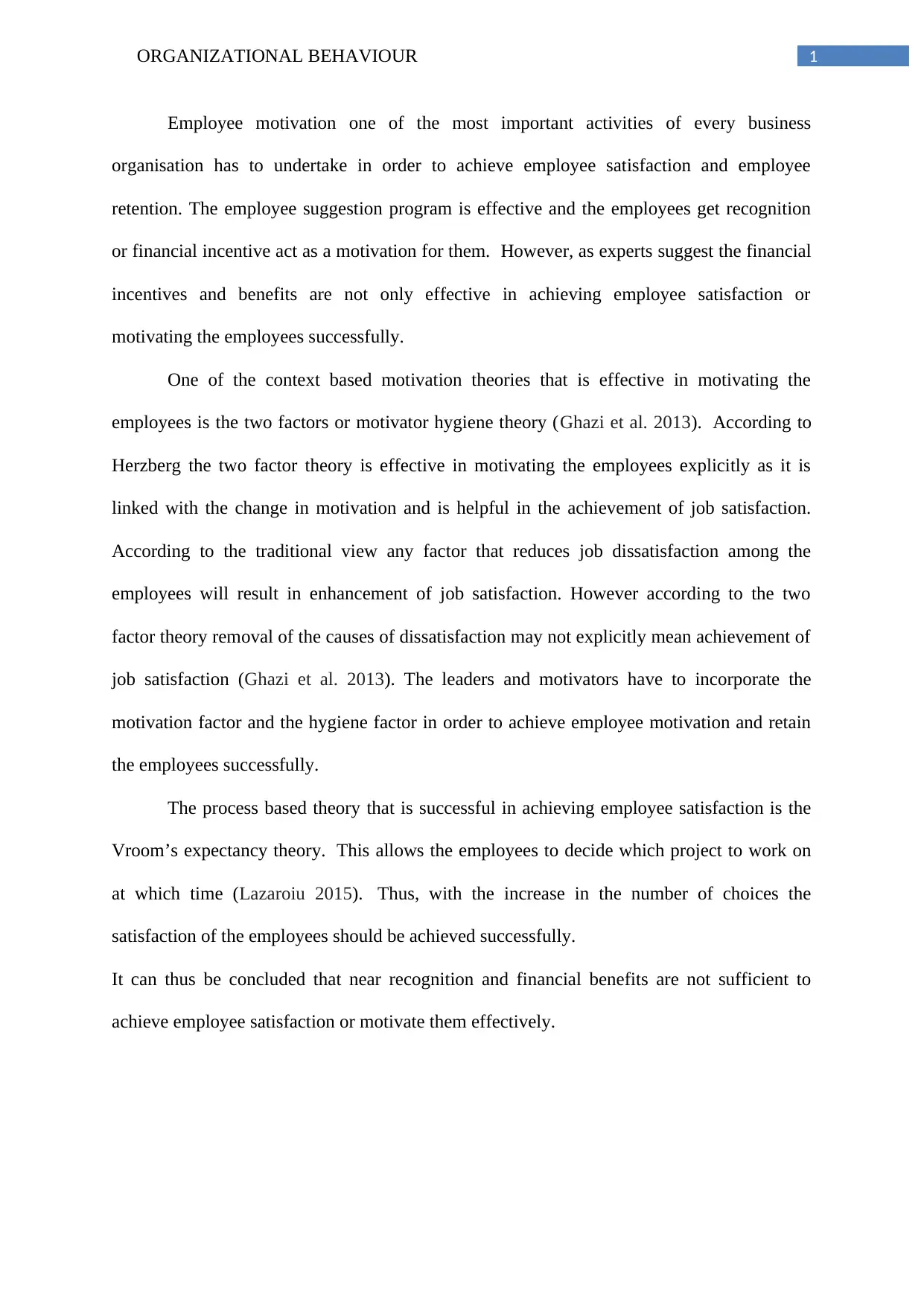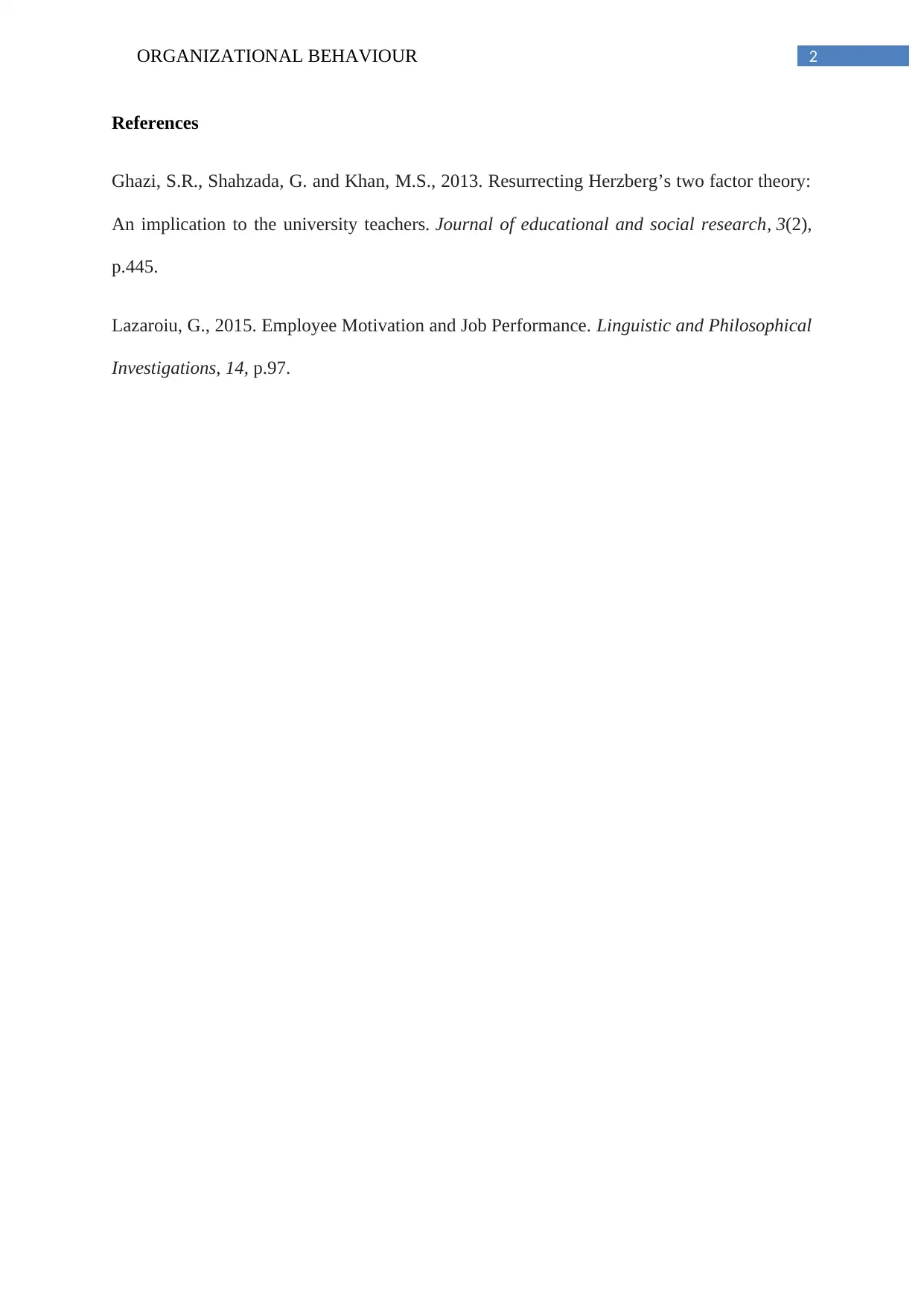Organizational Behaviour: Motivation and Satisfaction Report Analysis
VerifiedAdded on 2020/02/19
|3
|379
|54
Report
AI Summary
This report provides an analysis of employee motivation and job satisfaction within an organizational context. It explores the significance of employee motivation and the factors that contribute to it. The report delves into Herzberg's two-factor theory, highlighting the importance of both hygiene and motivator factors in achieving employee satisfaction. It also discusses Vroom’s expectancy theory and its role in allowing employees to make informed choices about their work. The report concludes that while financial incentives and recognition are important, they alone are not sufficient to ensure employee satisfaction. Therefore, the report emphasizes the need for a comprehensive approach that integrates both motivational and hygiene factors for effective employee engagement and retention.
1 out of 3









![[object Object]](/_next/static/media/star-bottom.7253800d.svg)